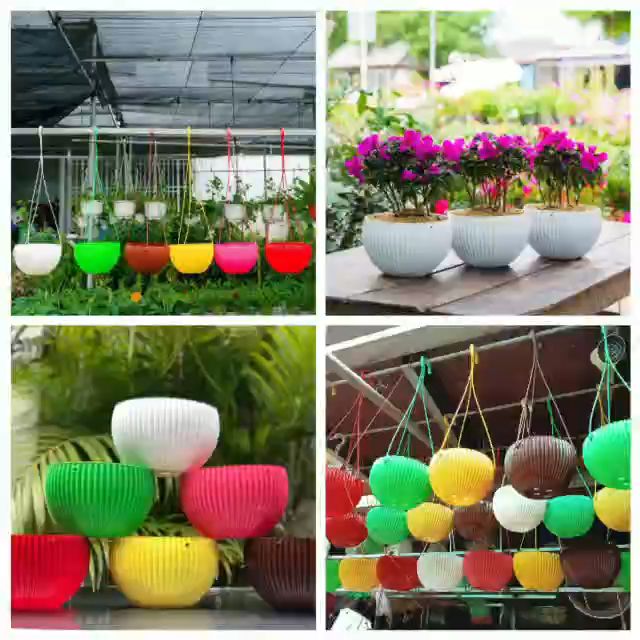The color of plastic pots not only plays a role in decoration and aesthetics but also significantly impacts the growth of plants. Below are some key effects of pot color on plant development:
1. Light Absorption and Reflection
- Light-colored pots (white, yellow, pastel): Light-colored plastic pots generally reflect more light, helping to maintain a more stable temperature inside the pot, especially on hot, sunny days. This can help plants avoid heat stress and reduce the risk of water loss.
- Dark-colored pots (black, brown, dark green): Dark-colored plastic pots absorb more sunlight, leading to a rapid increase in temperature inside the pot. This can be beneficial in winter or in cold climates but may be harmful in hot environments, causing the roots to overheat and hindering plant growth.
2. Impact on Soil Temperature
- Black pots: As mentioned, black pots absorb a lot of heat, raising the soil temperature inside. In high-temperature areas, this can lead to the roots “cooking” or being damaged by excessive heat, which hinders water and nutrient absorption.
- White pots: White or other light-colored pots help reduce heat absorption, keeping the soil cooler and more stable, especially beneficial for plants during summer or in high light conditions.
3. Effect on Drainage
- Light-colored pots: These pots maintain a cooler temperature, which can affect the drainage speed. Water may drain more slowly in light-colored pots, increasing soil moisture.
- Dark-colored pots: Dark pots can cause water to evaporate more quickly due to higher temperatures, leading to drier soil and requiring more frequent watering.
4. Impact on Photosynthesis
- Reflecting light onto leaves: Light-colored plastic pots can reflect light back into the surrounding environment, including onto plant leaves. This can enhance photosynthesis, especially for plants in low-light conditions.
- Heat absorption and reduced photosynthesis: Dark-colored pots may increase the plant’s temperature, leading to heat stress. When plants are stressed, photosynthesis may slow down or even stop entirely.
5. Effect on Root Development
- Cooler roots for healthier growth: In hot climates, using light-colored pots can help maintain a lower soil temperature, providing a better environment for root growth. Roots tend to thrive in stable, non-overheated conditions.
- Risk of root damage with dark colors: Dark-colored pots can cause the soil temperature to rise, leading to the potential for root damage or death, which severely impacts the plant’s overall health.
6. Choosing the Right Pot Color for the Environment and Plants
- Hot and sunny environments: Opt for light-colored or white pots to minimize the impact of high temperatures on the plants.
- Cool or cold environments: Choose dark-colored pots to help retain warmth for the roots and promote growth during the winter.
7. Aesthetic Appeal and the Gardener’s Psychology
- Color and emotions: The color of the pots can also affect the gardener’s mood, creating feelings of joy, relaxation, or energy, which can indirectly influence how the plants are cared for.
The color of plastic pots has a more profound impact than just being an aesthetic factor. It directly affects the temperature, moisture levels in the soil, photosynthesis, and the growth of plants. Therefore, choosing the right pot color according to the environmental conditions and plant type is crucial to ensure healthy and optimal plant growth.


